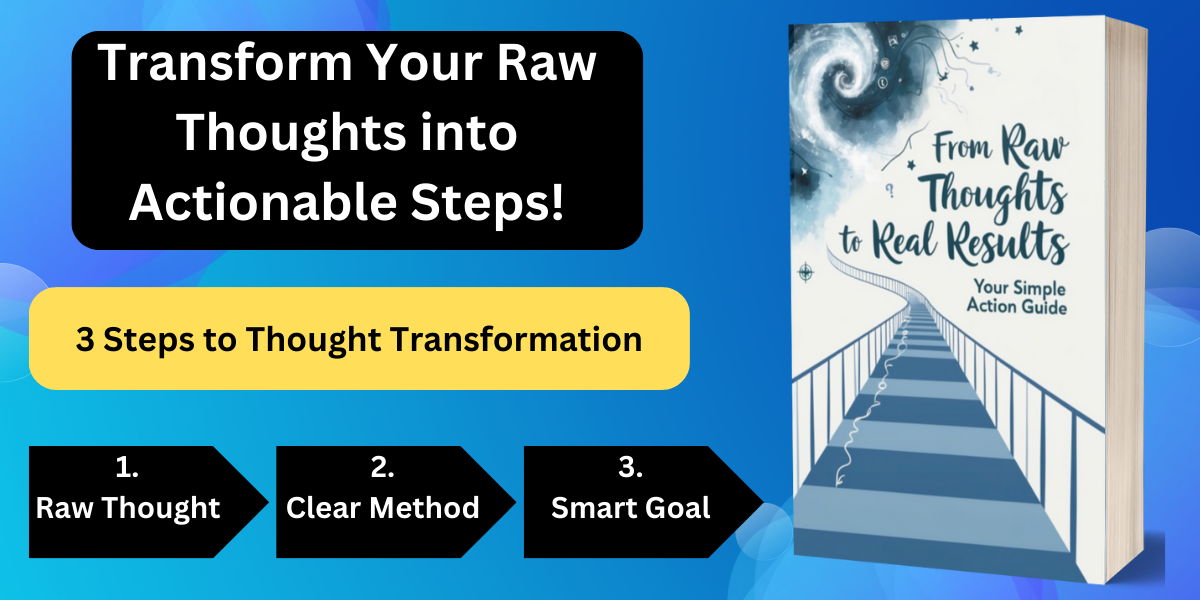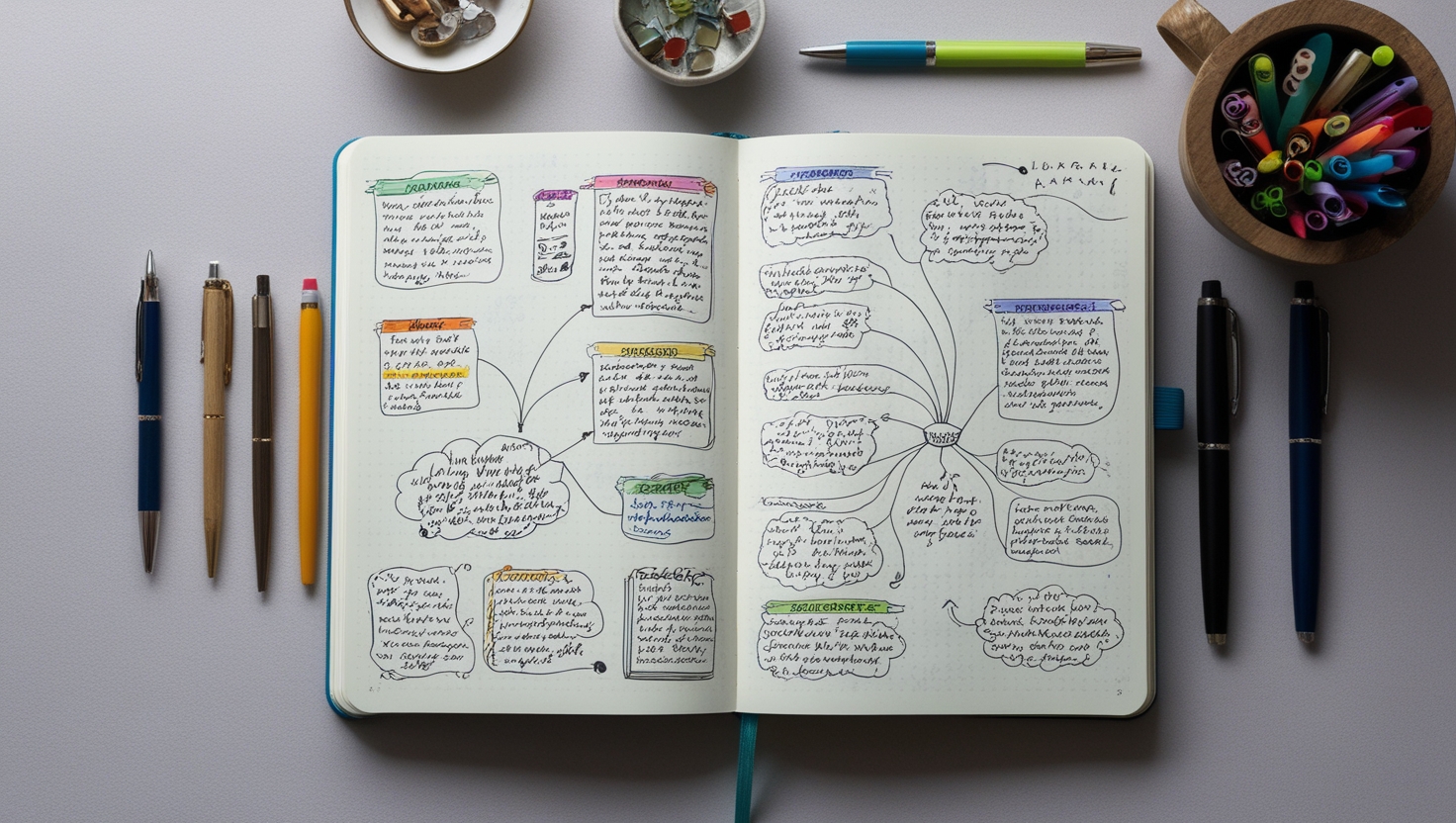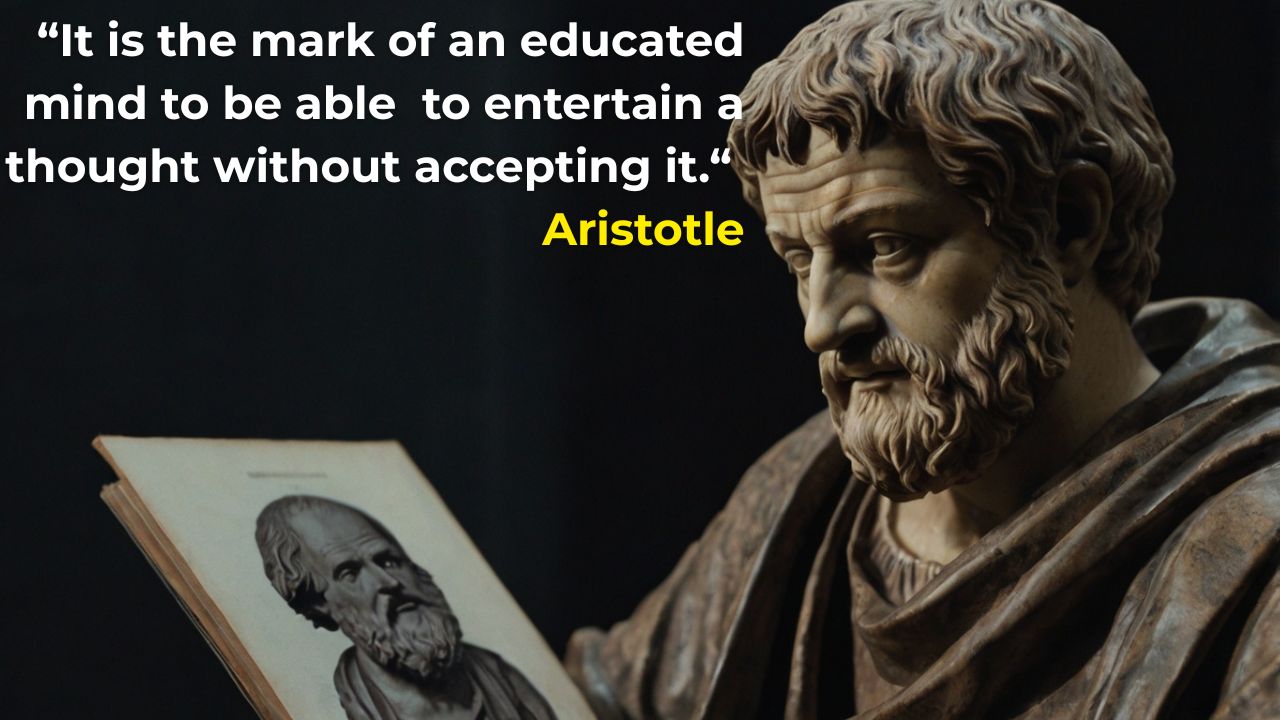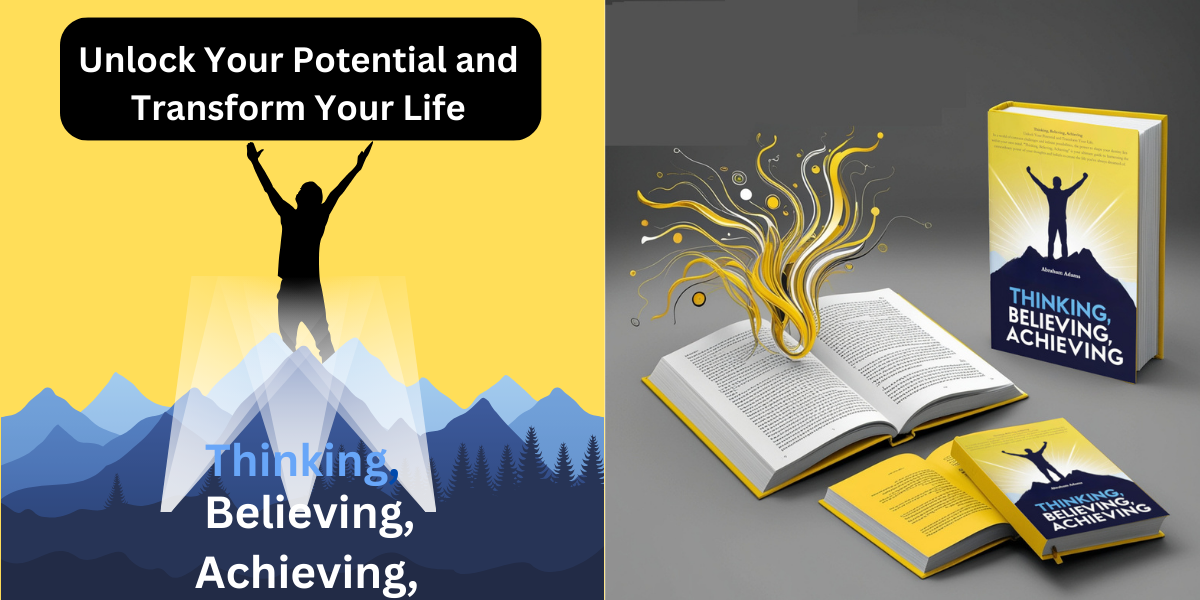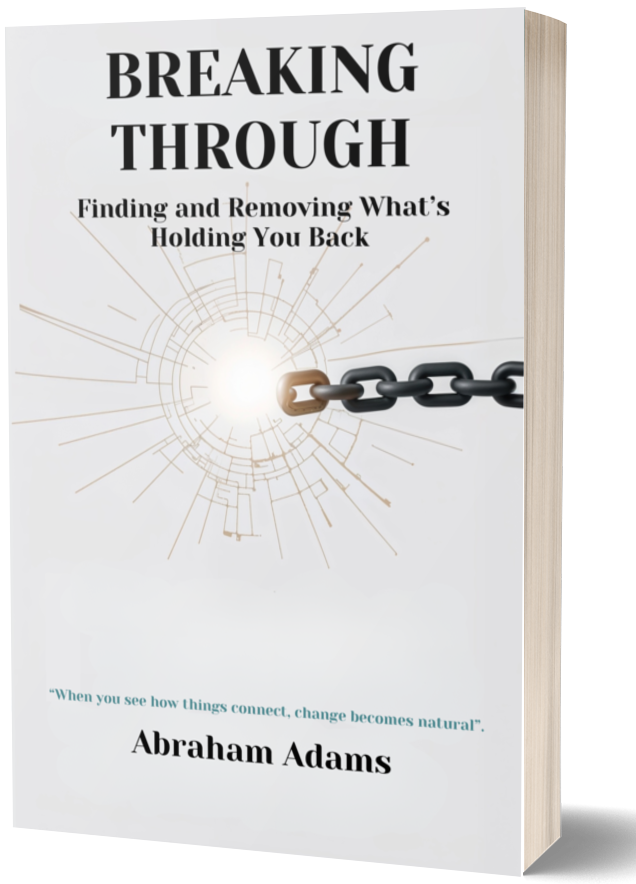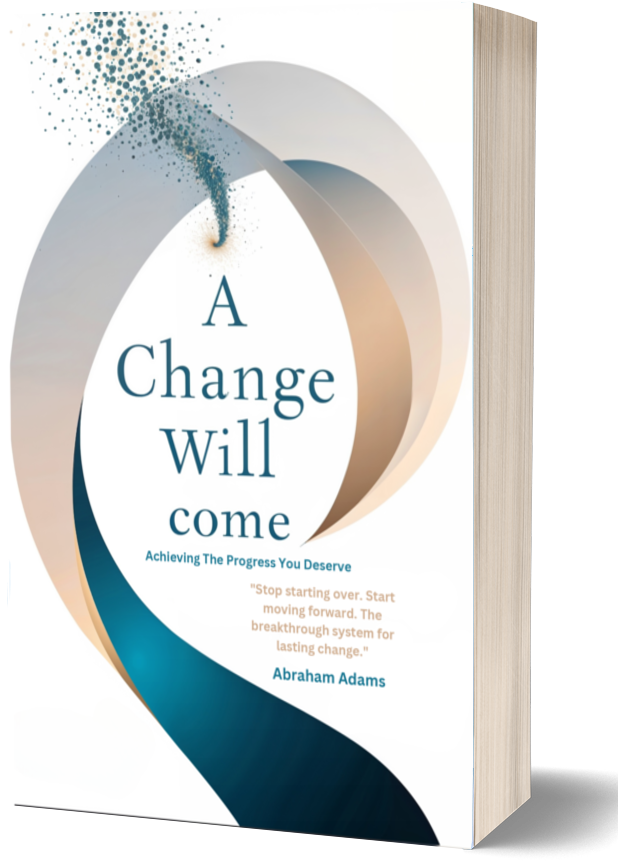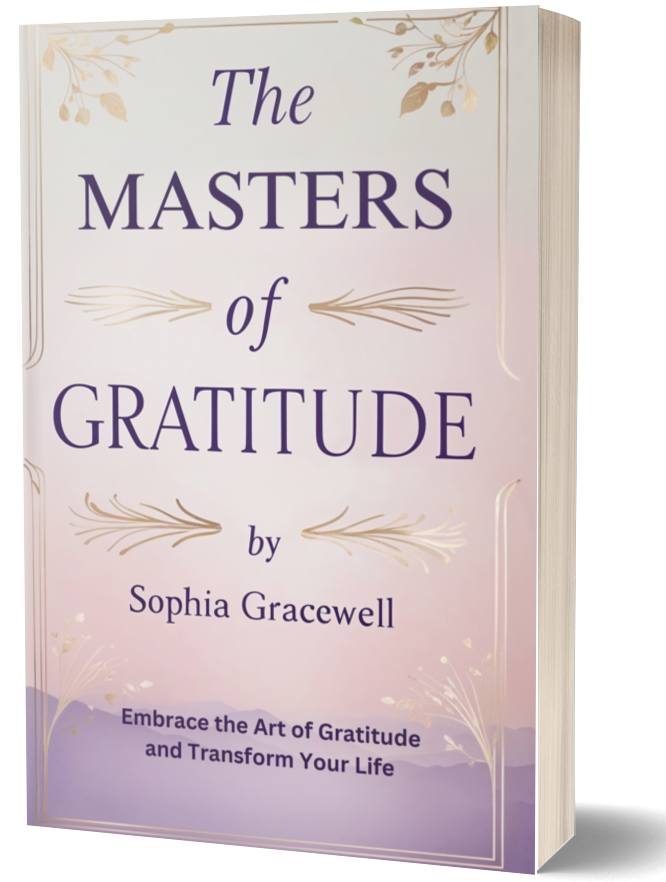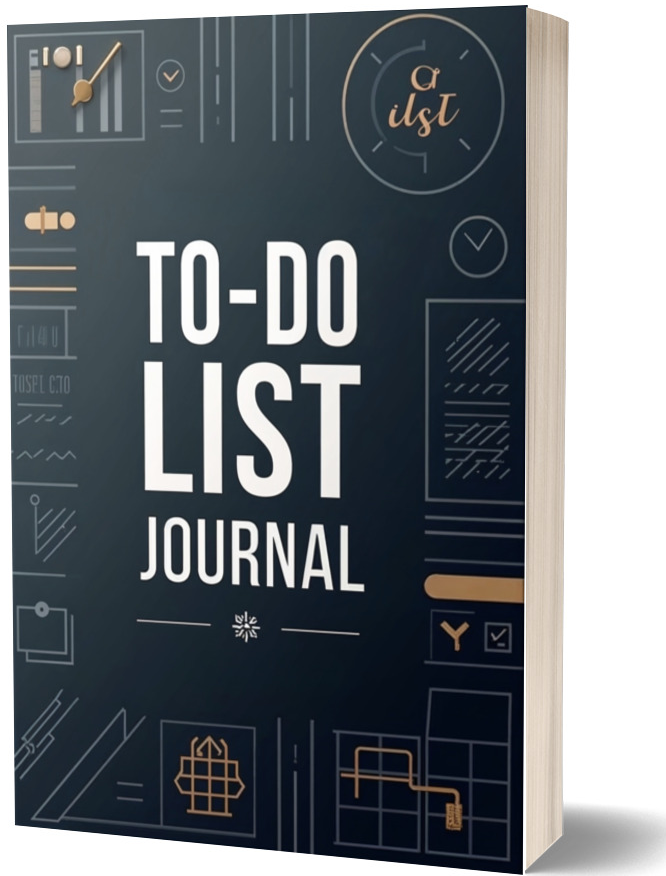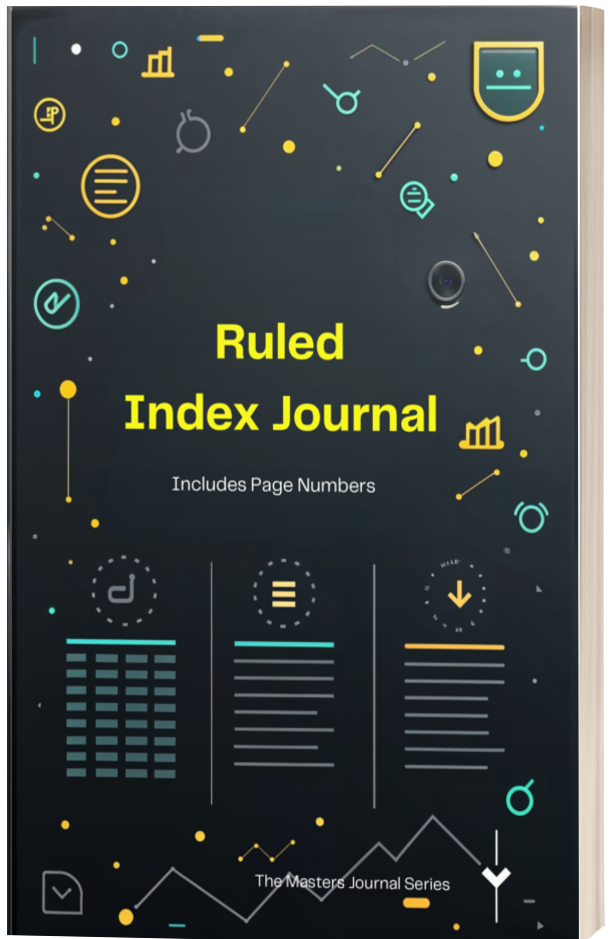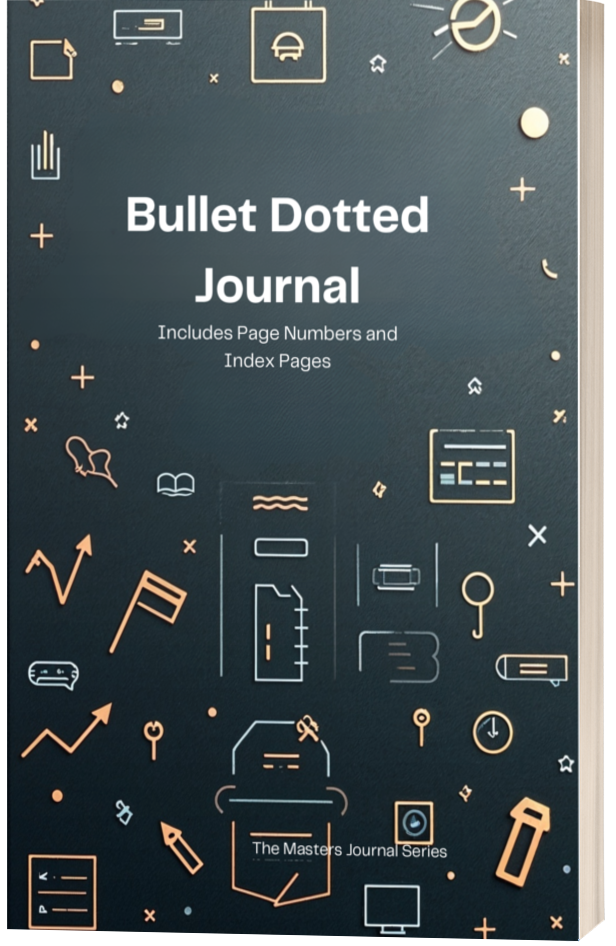Super User
The Power of Thought
Contact Us
Contact Us
Have a question, feedback, or just want to say hello? We’d love to hear from you! Feel free to reach out via email, and we’ll get back to you as soon as possible.
Email: This email address is being protected from spambots. You need JavaScript enabled to view it.
We look forward to connecting with you!
The Connection Between Thoughts and Emotions
The Connection Between Thoughts and Emotions
Our thoughts and emotions are inextricably linked, forming a dynamic relationship that influences how we perceive and interact with the world. Understanding this connection is essential for managing our mental and emotional well-being. By learning how thoughts shape emotions—and vice versa—we can take greater control of our internal experiences and foster a more balanced, fulfilling life.
---
How Thoughts Shape Emotions
1. **Perception Drives Feeling**
The way we interpret events determines our emotional responses. For example:
- Thought: “I’m going to fail this presentation.”
- Emotion: Anxiety or fear.
- Thought: “This presentation is a great opportunity to share my ideas.”
- Emotion: Excitement or confidence.
Our perceptions act as filters, framing experiences in ways that directly affect how we feel.
2. **Cognitive Distortions Amplify Negativity**
Negative thought patterns, such as catastrophizing or overgeneralizing, can exacerbate difficult emotions. For example:
- Distortion: “I always mess things up.”
- Result: Feelings of hopelessness or frustration.
Challenging and reframing these distortions can help reduce their emotional impact.
---
How Emotions Influence Thoughts
1. **Emotions Color Perception**
Our emotional state affects how we interpret situations. For example:
- When feeling sad, neutral events may seem more negative.
- When feeling happy, challenges may appear less daunting.
This emotional lens can either enhance or skew our perspective, depending on the situation.
2. **Mood-Dependent Memory**
Emotions also influence the types of memories we access. For instance:
- Positive emotions often trigger happy memories, reinforcing an optimistic mindset.
- Negative emotions can bring up past difficulties, deepening feelings of sadness or frustration.
---
The Feedback Loop Between Thoughts and Emotions
Thoughts and emotions create a feedback loop that can either uplift or spiral downward. For example:
1. Negative thought: “I’ll never succeed.”
2. Emotion: Defeat or despair.
3. Reinforced thought: “Why even bother trying?”
Conversely:
1. Positive thought: “This challenge will help me grow.”
2. Emotion: Motivation or optimism.
3. Reinforced thought: “I can handle this.”
Breaking negative loops and cultivating positive cycles is key to emotional and mental well-being.
---
Strategies to Strengthen the Connection
1. **Practice Mindfulness**
Mindfulness helps you observe your thoughts and emotions without judgment. By recognizing patterns, you can respond intentionally rather than react impulsively.
- Try: Daily mindfulness meditation or deep-breathing exercises.
2. **Reframe Negative Thoughts**
Challenge self-defeating thoughts by asking questions like:
- “Is this thought based on facts or assumptions?”
- “What’s a more constructive way to view this situation?”
3. **Emotional Awareness**
Identify and label your emotions to better understand their origin and influence on your thoughts.
- Example: “I feel frustrated because I’m worried about missing a deadline.”
4. **Gratitude Journaling**
Focusing on what you’re grateful for shifts your thoughts toward positivity, which in turn enhances your emotional state.
5. **Seek Professional Support**
If negative thought-emotion cycles persist, working with a therapist can provide tools and strategies to break the pattern.
---
Why This Connection Matters
Understanding the link between thoughts and emotions empowers you to:
- Cultivate emotional resilience.
- Make better decisions based on balanced thinking.
- Enhance relationships through improved communication and empathy.
- Build a healthier mindset for personal and professional growth.
---
Conclusion
The connection between thoughts and emotions is a powerful force that shapes our experiences and well-being. By becoming aware of this relationship and practicing strategies to manage it, we can foster a more positive and resilient outlook on life. Remember, small shifts in thinking can lead to profound changes in how we feel—and ultimately, how we live.
Self-Compassion: The Foundation of Inner Strength
Self-Compassion: The Foundation of Inner Strength
In a world that often emphasizes perfection and relentless achievement, it’s easy to become overly critical of ourselves. We set high standards, chase lofty goals, and punish ourselves for any perceived shortcomings. But what if the key to resilience and true inner strength lies not in self-criticism, but in self-compassion?
Self-compassion—the act of treating yourself with kindness and understanding in moments of difficulty—is a powerful tool for fostering emotional well-being, resilience, and inner peace. This article explores the importance of self-compassion and how you can cultivate it in your life.
---
What is Self-Compassion?
Self-compassion, as defined by psychologist Dr. Kristin Neff, involves three core components:
1. **Self-Kindness vs. Self-Judgment**: Treating yourself with the same kindness and care that you would offer a close friend, rather than being harshly critical.
2. **Common Humanity vs. Isolation**: Recognizing that struggle and imperfection are universal human experiences, helping you feel less alone in your challenges.
3. **Mindfulness vs. Over-Identification**: Being present with your emotions without letting them overwhelm you or define your identity.
Self-compassion is not self-pity or self-indulgence. It’s about acknowledging your feelings and offering yourself grace, even when you stumble.
---
The Benefits of Self-Compassion
1. **Increased Resilience**
Self-compassion provides a safe emotional foundation, allowing you to bounce back from setbacks with greater ease. By treating yourself kindly, you build the strength to face life’s challenges without fear of failure.
2. **Improved Mental Health**
Studies show that self-compassion reduces symptoms of anxiety, depression, and stress. It fosters a sense of emotional balance, helping you manage negative thoughts and feelings more effectively.
3. **Enhanced Relationships**
When you practice self-compassion, you’re more likely to extend compassion to others. This creates deeper, more empathetic connections in your personal and professional relationships.
4. **Greater Motivation**
Contrary to the belief that self-criticism drives success, research reveals that self-compassion promotes intrinsic motivation. When you support yourself through mistakes, you’re more willing to take risks and pursue goals.
5. **Reduced Burnout**
Self-compassion acts as a buffer against burnout by encouraging you to rest, recharge, and prioritize self-care without guilt.
---
How to Cultivate Self-Compassion
1. **Practice Self-Kindness**
- Replace self-critical thoughts with kind and supportive ones.
- Use affirmations like, “I am doing the best I can,” or “It’s okay to make mistakes.”
2. **Acknowledge Your Humanity**
- Remind yourself that everyone experiences struggles and setbacks.
- Reflect on shared human experiences to feel connected rather than isolated.
3. **Engage in Mindful Reflection**
- Take a moment to observe your emotions without judgment.
- Label your feelings (“I feel disappointed”) and allow yourself to experience them without resistance.
4. **Set Healthy Boundaries**
- Protect your time and energy by saying no to unnecessary demands.
- Prioritize self-care as an essential part of maintaining balance and well-being.
5. **Write a Self-Compassion Letter**
- Write a letter to yourself as if you were comforting a dear friend. Express empathy, understanding, and encouragement.
6. **Seek Support**
- Share your feelings with trusted friends or a therapist. Speaking openly about your challenges can normalize your experiences and reinforce compassion.
---
Misconceptions About Self-Compassion
1. **It’s Not Weakness**
Self-compassion is not about avoiding accountability. It’s about facing challenges with kindness, which requires immense courage and strength.
2. **It’s Not Self-Indulgence**
Being compassionate toward yourself doesn’t mean neglecting growth or discipline. Instead, it creates a supportive foundation for personal improvement.
3. **It’s Not Selfish**
When you practice self-compassion, you’re better equipped to support others. A well-cared-for person can give more generously to those around them.
---
Conclusion
Self-compassion is the foundation of inner strength. By treating yourself with kindness, embracing your humanity, and practicing mindfulness, you can build resilience, improve your mental health, and live a more fulfilling life.
Remember, self-compassion is a skill that takes practice. Start small, be patient with yourself, and watch as this simple yet profound mindset transforms your relationship with yourself and the world around you.
The Smart Framework and The Clear Method: Goal-Setting Made Simple
The SMART Framework and The CLEAR Method: Goal-Setting Made Simple
Effective goal-setting is the cornerstone of personal and professional success. However, without a structured approach, even the best intentions can fall short. Two popular frameworks—the SMART framework and the CLEAR method—offer practical tools to help you define, pursue, and achieve your goals with clarity and focus.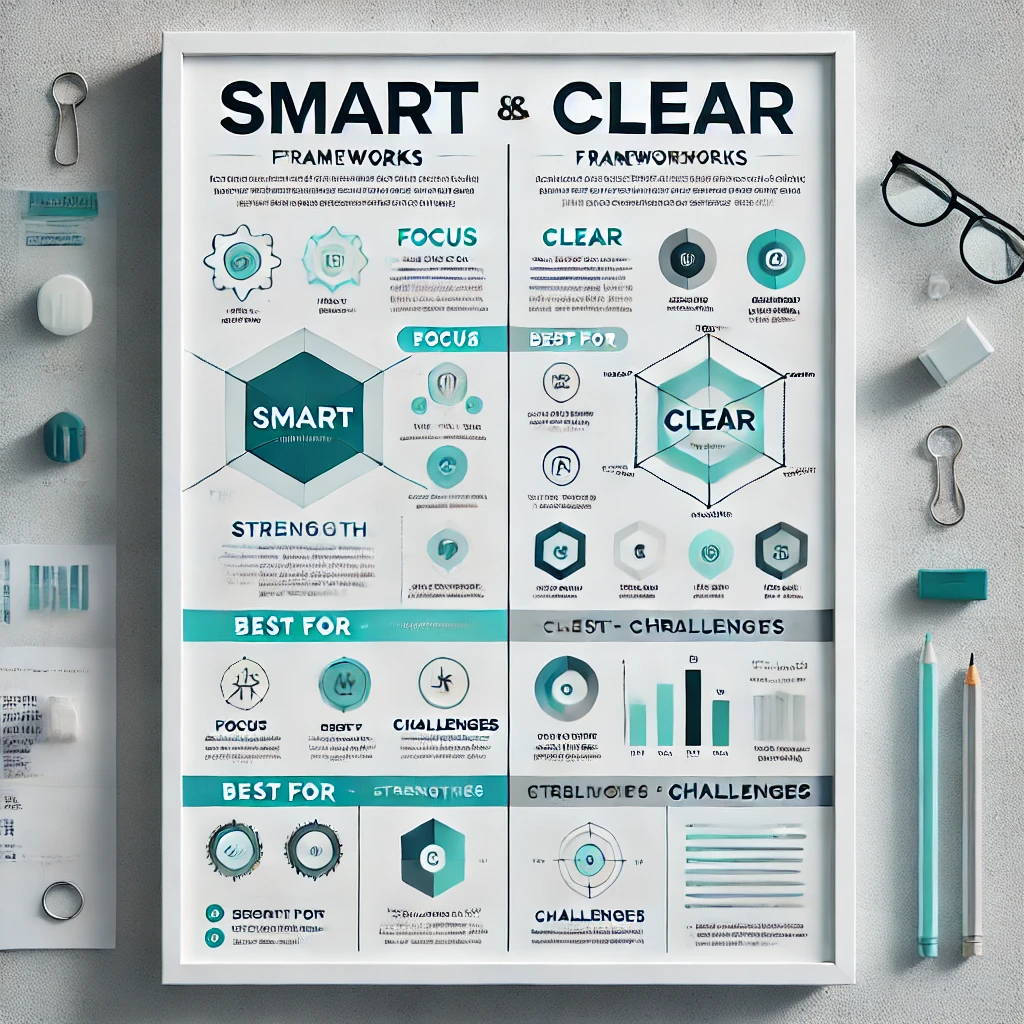
This article explores both methods, their unique benefits, and how to apply them for maximum impact.
---
The SMART Framework
The SMART framework is a widely used goal-setting tool that ensures your objectives are clear, achievable, and measurable. SMART stands for:
1. **Specific**
Your goal should be clear and precise, leaving no room for ambiguity.
- Example: Instead of saying, “I want to get in shape,” specify, “I want to run a 5K in under 30 minutes.”
2. **Measurable**
Define how you will track your progress and determine success.
- Example: Track your running distance and time weekly to measure improvement.
3. **Achievable**
Set a goal that is realistic given your resources and time frame.
- Example: If you’re a beginner, aiming to run a 5K in a month is achievable; aiming for a marathon might not be.
4. **Relevant**
Ensure your goal aligns with your broader ambitions and values.
- Example: Running a 5K aligns with your goal of improving physical health and energy levels.
5. **Time-Bound**
Set a clear deadline to create urgency and focus.
- Example: Commit to completing the 5K within the next 8 weeks.
Why Use SMART Goals?
SMART goals provide structure and eliminate vagueness, making it easier to stay on track and celebrate progress. They work well for both personal and professional objectives, offering a step-by-step roadmap to success.
---
The CLEAR Method
While the SMART framework focuses on specificity and measurability, the CLEAR method emphasizes adaptability and alignment, particularly in dynamic environments like teams or organizations. CLEAR stands for:
1. **Collaborative**
Goals should encourage teamwork and collective effort.
- Example: Set a goal for your team to launch a product within three months, ensuring everyone’s input and roles are clear.
2. **Limited**
Keep goals manageable in scope to maintain focus and avoid overwhelm.
- Example: Instead of tackling multiple projects, focus on completing one high-priority project at a time.
3. **Emotional**
Goals should resonate emotionally to inspire motivation and commitment.
- Example: Align goals with personal values or organizational missions, such as creating a product that positively impacts customers.
4. **Appreciable**
Break larger goals into smaller, actionable steps.
- Example: Divide a year-long project into monthly or weekly milestones to make progress more tangible.
5. **Refinable**
Be flexible and willing to adjust goals as circumstances evolve.
- Example: If new challenges arise, revisit and revise your project timeline or strategy.
Why Use the CLEAR Method?
The CLEAR method is particularly effective in collaborative and fast-changing environments. It fosters flexibility and emotional engagement, ensuring that goals remain relevant and achievable even as priorities shift.
---
Comparing SMART and CLEAR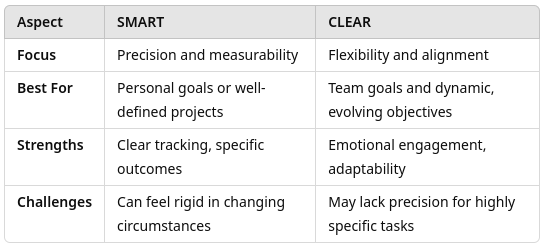
---
How to Apply Both Frameworks
1. **Combine Strengths**: Use SMART to define clear, measurable goals, and integrate CLEAR principles for adaptability and emotional connection.
2. **Tailor to Context**: For personal goals, SMART may suffice. For team projects, CLEAR’s collaborative and refinable aspects can provide better outcomes.
3. **Regular Check-Ins**: Whether using SMART, CLEAR, or both, schedule regular reviews to assess progress and make necessary adjustments.
---
Conclusion
Both the SMART framework and the CLEAR method offer valuable approaches to goal-setting. By understanding their unique strengths and tailoring them to your needs, you can create goals that are both achievable and inspiring.
Start by identifying your objectives and choose the framework that best aligns with your situation. With clarity, focus, and flexibility, you’ll be well on your way to achieving your aspirations.
Welcome to your thought transformation journal, a tool to guide you in turning raw ideas—your dreams, frustrations, and hopes—into actionable goals. This journal is designed not just for reflection but as a practical roadmap toward building your desired future.**What’s Inside**
This journal guides you through structured steps to shape thoughts into actionable plans:
1. Raw Thoughts: A space to freely jot down unfiltered thoughts, creating a foundation for change.
2. Thought Transformation: Select thoughts from the Raw Thoughts section to refine. Use the CLEAR and SMART frameworks to mold them into practical goals.
3. Examples & Prompts: Sample pages illustrate how to transform common thoughts into constructive actions, offering guidance and inspiration.
4. Tracking & Adjustments: Regularly revisit goals, track progress, and make necessary adjustments, acknowledging that transformation is a continuous journey.
5. Positivity & Progress: Reframe negative thoughts to nurture a constructive mindset, maintaining forward momentum.Each section in this journal supports your growth. As you move through these steps, you’ll see how small, thoughtful actions add up to significant progress.
A Guide to Bullet Journaling: Transform a Blank Journal into a Productive Powerhouse
A Guide to Bullet Journaling: Transforming a Blank Journal into a Productivity Powerhouse
A bullet journal is more than just a notebook; it’s a versatile tool that can help you organize your life, track your goals, and foster creativity. Starting with a blank journal may feel overwhelming, but with the right ideas and strategies, you can create a system tailored to your needs and preferences.
This guide will walk you through the basics of bullet journaling and suggest practical ideas to make your journal both functional and inspiring.
---
What is Bullet Journaling?
Bullet journaling is a method of personal organization created by Ryder Carroll. It combines elements of a planner, diary, and to-do list into a customizable system. The beauty of a bullet journal lies in its flexibility—you decide what to include and how to format it.
---
Essential Supplies
Here’s what you need to get started:
- **A blank journal**: Dot grid journals are popular for their versatility, but lined or plain notebooks work just as well.
- **Pens and markers**: Invest in high-quality pens that don’t bleed through the pages.
- **Ruler**: Useful for creating straight lines and clean layouts.
- **Optional embellishments**: Washi tape, stickers, and colored pencils can add a creative touch.
---
Setting Up Your Bullet Journal
1. **Create an Index**
Dedicate the first few pages to an index. This will help you quickly find sections or important entries.
2. **Add a Key**
Design a key for symbols you’ll use throughout your journal. For example:
- Task: ○ (open circle)
- Completed Task: ✓ (checkmark)
- Event: □ (open square)
- Priority: ★ (star)
3. **Monthly Overview**
Create a spread to outline your month. Include important dates, goals, and tasks.
4. **Weekly or Daily Logs**
Plan your week or days in detail. Include tasks, appointments, and notes.
---
Ideas for Your Bullet Journal
**1. Habit Tracker**
Monitor daily habits such as exercise, hydration, meditation, or reading. Use a grid layout to track your progress over the month.
**2. Goal Setting**
Dedicate a section to your short-term and long-term goals. Break them into actionable steps and track your progress.
**3. Gratitude Log**
Write down things you’re grateful for each day. This practice fosters positivity and mindfulness.
**4. Mood Tracker**
Use colors or symbols to record your mood each day. This can help you identify patterns and triggers.
**5. Meal Planner**
Plan your weekly meals and grocery lists. This helps save time and reduces food waste.
**6. Finance Tracker**
Keep track of your income, expenses, and savings goals. A simple monthly budget layout can help you stay on top of your finances.
**7. Brain Dump**
Reserve a page for a brain dump where you can jot down random ideas, thoughts, or reminders.
**8. Books to Read and Movies to Watch**
Create a list of books, movies, or TV shows you want to explore. Check them off as you complete them.
**9. Travel Plans**
Design a travel spread to plan upcoming trips. Include destinations, itineraries, packing lists, and budget details.
**10. Inspirational Quotes**
Dedicate a page to uplifting quotes or mantras. Refer to it for motivation when needed.
**11. Project Tracker**
Track the progress of personal or professional projects. Break tasks into milestones and record deadlines.
**12. Health and Fitness Log**
Record workouts, water intake, and health milestones. Include notes on how you’re feeling physically and mentally.
**13. Creative Pages**
- **Doodles and Sketches**: Use blank pages to express your artistic side.
- **Vision Board**: Paste images and words that represent your goals.
**14. Learning Tracker**
Track new skills or courses you’re working on. Note key takeaways and progress.
---
Tips for Success
- **Start simple**: Avoid overwhelming yourself with too many layouts or sections initially.
- **Be consistent**: Set aside a regular time to update your journal.
- **Adapt as needed**: Change layouts or add sections to suit your evolving needs.
- **Make it yours**: Personalize your journal to reflect your personality and interests.
---
Conclusion
A bullet journal is a powerful tool for staying organized, fostering creativity, and achieving your goals. Whether you use it for productivity, self-reflection, or planning, the possibilities are endless. Start with a blank journal, incorporate these ideas, and watch as it transforms into a system that works uniquely for you.
How Gratitude Can Transform Your Life
How Gratitude Can Transform Your Life
Gratitude is more than just saying “thank you”—it’s a powerful mindset that can positively impact your mental, emotional, and even physical well-being. By intentionally practicing gratitude, you can shift your perspective, deepen your relationships, and create a more fulfilling life.
This article explores the transformative power of gratitude and how you can make it a central part of your daily life.
---
The Science Behind Gratitude
Research shows that gratitude has profound effects on the brain and body:
1. **Boosts Happiness**: Studies by positive psychology researchers like Dr. Martin Seligman have shown that practicing gratitude increases happiness levels and reduces depressive symptoms.
2. **Rewires the Brain**: Gratitude activates the brain’s reward system, releasing feel-good neurotransmitters like dopamine and serotonin. Over time, this rewiring reinforces positive thinking patterns.
3. **Improves Physical Health**: People who practice gratitude report better sleep, lower blood pressure, and fewer symptoms of illness.
4. **Strengthens Relationships**: Expressing gratitude strengthens bonds by fostering mutual respect and appreciation.
---
How Gratitude Transforms Your Perspective
1. **Shifts Focus from Lack to Abundance**
Gratitude encourages you to focus on what you have rather than what you lack. This shift reduces feelings of envy and dissatisfaction, creating a sense of contentment and abundance.
2. **Builds Emotional Resilience**
Gratitude helps you find silver linings in challenging situations. By appreciating lessons learned or support received during tough times, you develop a stronger ability to cope with adversity.
3. **Enhances Mindfulness**
Gratitude fosters mindfulness by anchoring your attention to the present moment. When you’re thankful, you’re more likely to savor and appreciate life as it unfolds.
---
Practical Ways to Cultivate Gratitude
1. **Keep a Gratitude Journal**
Write down three things you’re grateful for each day. This simple practice trains your mind to focus on the positive aspects of life.
2. **Express Appreciation**
Take time to thank people who have impacted your life. Whether it’s a handwritten note, a heartfelt conversation, or a small gesture, expressing gratitude deepens connections.
3. **Practice Gratitude Meditation**
Dedicate a few minutes each day to reflect on things you’re thankful for. Visualize the people, experiences, or opportunities that bring you joy.
4. **Use Gratitude Prompts**
Prompts like “What made me smile today?” or “What’s one thing I’m looking forward to?” can help you identify sources of gratitude.
5. **Create a Gratitude Jar**
Write moments of gratitude on slips of paper and collect them in a jar. Over time, you’ll build a tangible reminder of life’s blessings.
---
The Ripple Effect of Gratitude
Practicing gratitude doesn’t just transform your life—it creates a ripple effect that impacts those around you. Grateful individuals tend to:
- Spread positivity in their interactions.
- Inspire others to adopt a grateful mindset.
- Foster a culture of appreciation in their communities.
---
Conclusion
Gratitude is a simple yet transformative practice that can enhance every aspect of your life. By focusing on what you have, appreciating the people around you, and finding joy in the present moment, you can cultivate a mindset of abundance and resilience.
Start small: take a moment today to reflect on one thing you’re grateful for. Over time, these small acts of gratitude will create lasting changes, enriching your life in ways you never imagined.
How to Train Your Mind for Focus and Productivity
How to Train Your Mind for Focus and Productivity
In today’s world of constant distractions, maintaining focus and maximizing productivity can feel like an uphill battle. However, with deliberate mental training and the right strategies, you can enhance your ability to concentrate and achieve more in less time.
This article explores proven methods to train your mind for greater focus and productivity.
---
Why Focus Matters
Focus is the mental ability to direct your attention toward a specific task or goal, minimizing distractions. It allows you to work efficiently, make better decisions, and achieve high-quality outcomes. Without focus, productivity suffers, and tasks take longer to complete, leading to frustration and burnout.
---
Strategies to Train Your Mind for Focus
1. **Practice Mindfulness Meditation**
Mindfulness meditation is a powerful tool to improve concentration by training your brain to stay present.
- **How to Start**: Dedicate 5-10 minutes daily to focus on your breath. When your mind wanders, gently bring it back to the present.
- **Benefits**: Regular practice strengthens your attention span and reduces stress, making it easier to stay focused on tasks.
2. **Set Clear Goals**
Clarity is key to productivity. Define what you want to achieve before starting a task.
- **Use SMART Goals**: Specific, Measurable, Achievable, Relevant, and Time-bound objectives help you stay on track.
- **Break Tasks Into Smaller Steps**: Large goals can be overwhelming. Dividing them into smaller, actionable tasks keeps you focused and motivated.
3. **Create a Distraction-Free Environment**
Your environment significantly impacts your ability to concentrate.
- **Declutter Your Workspace**: Remove unnecessary items that may divert your attention.
- **Use Tools to Block Distractions**: Apps like Freedom or Cold Turkey can block distracting websites or notifications.
- **Set Boundaries**: Communicate with others about your need for uninterrupted time.
4. **Use the Pomodoro Technique**
The Pomodoro Technique involves working in focused intervals, followed by short breaks.
- **How It Works**: Set a timer for 25 minutes of focused work, then take a 5-minute break. After four cycles, take a longer 15-30 minute break.
- **Why It Works**: This method prevents mental fatigue and maintains high levels of focus throughout the day.
5. **Train Your Brain with Focus Exercises**
Strengthen your ability to concentrate through mental exercises.
- **Examples**:
- Solve puzzles or play memory games.
- Practice reading long-form content without interruptions.
- Engage in activities requiring sustained attention, such as painting or playing an instrument.
6. **Practice Single-Tasking**
Multitasking divides your attention and reduces productivity.
- **Focus on One Task at a Time**: Commit to completing one task before moving on to the next.
- **Eliminate Task Switching**: Reduce the temptation to jump between tasks by using tools like task prioritization lists.
7. **Prioritize Sleep and Physical Health**
Your brain’s ability to focus relies heavily on your physical well-being.
- **Sleep**: Aim for 7-9 hours of quality sleep each night to support cognitive function.
- **Exercise**: Regular physical activity increases blood flow to the brain, enhancing focus and energy levels.
- **Nutrition**: Eat brain-boosting foods like nuts, leafy greens, and omega-3-rich fish to maintain mental sharpness.
8. **Limit Digital Overload**
Excessive screen time and constant notifications can overwhelm your mind.
- **Set Digital Boundaries**: Schedule specific times to check emails or social media.
- **Detox Regularly**: Take breaks from digital devices to give your brain time to recharge.
9. **Reflect and Review**
Reflection helps you assess what’s working and what needs improvement.
- **Daily Reflection**: Spend a few minutes at the end of the day reviewing your accomplishments and identifying areas for growth.
- **Adjust Strategies**: Adapt your approach based on what you learn from your reflections.
---
The Long-Term Benefits of Mental Training
Consistently training your mind to focus enhances more than just productivity. It boosts creativity, reduces stress, and improves decision-making. Over time, you’ll find yourself better equipped to handle challenges and achieve your goals with clarity and efficiency.
---
Conclusion
Training your mind for focus and productivity requires consistent effort and deliberate strategies. By incorporating mindfulness, setting clear goals, minimizing distractions, and maintaining a healthy lifestyle, you can unlock your full potential and accomplish more with less stress.
Start small, stay consistent, and watch as your ability to focus transforms your productivity and overall well-being.
Mind Over Matter: The Science Behind Positive Thinking
Mind Over Matter: The Science Behind Positive Thinking
Positive thinking is more than just an optimistic outlook—it’s a mindset that can significantly impact your mental, emotional, and even physical well-being. Rooted in science, the power of positive thinking has been shown to enhance resilience, improve health, and boost overall success.
In this article, we explore the science behind positive thinking and how you can harness it to transform your life.
---
The Science of Positive Thinking
1. **How Positive Thinking Works in the Brain**
The brain is wired to adapt and grow through a process known as neuroplasticity. Positive thoughts reinforce neural pathways associated with optimism and resilience, making it easier to maintain a constructive mindset over time.
- **Dopamine and Serotonin Boost:** Positive thinking triggers the release of "feel-good" neurotransmitters like dopamine and serotonin, which improve mood and reduce stress.
- **Amygdala Regulation:** Positive thinking helps calm the amygdala, the part of the brain responsible for processing fear and stress, leading to better emotional regulation.
2. **The Broaden-and-Build Theory**
Proposed by psychologist Barbara Fredrickson, this theory suggests that positive emotions broaden your perspective and help you build resources, such as skills and relationships. This upward spiral contributes to personal growth and resilience.
3. **The Placebo Effect**
The placebo effect demonstrates the mind’s ability to influence physical health. When patients believe in the efficacy of a treatment, their body often responds positively, even if the treatment itself is inert. This highlights the tangible power of belief and positive expectation.
---
Benefits of Positive Thinking
1. **Improved Mental Health**
Positive thinking reduces the risk of anxiety and depression by promoting a focus on solutions rather than problems. It fosters a sense of control and optimism, which are essential for mental well-being.
2. **Enhanced Physical Health**
Studies have shown that positive thinkers are less likely to suffer from chronic illnesses, such as cardiovascular disease. Positive thinking also strengthens the immune system, enabling the body to fight off infections more effectively.
3. **Increased Resilience**
Optimism helps individuals bounce back from adversity by framing challenges as opportunities for growth. This "can-do" attitude fuels perseverance and adaptability.
4. **Better Relationships**
Positive thinking enhances communication, empathy, and collaboration. It creates a foundation of trust and mutual support in personal and professional relationships.
5. **Greater Productivity and Success**
Positive thinkers are more likely to set and achieve ambitious goals. Their mindset fosters creativity, problem-solving, and sustained motivation, all of which are critical for long-term success.
---
Strategies to Cultivate Positive Thinking
1. **Practice Gratitude**
Gratitude shifts your focus from what’s lacking to what’s abundant. Write down three things you’re grateful for each day to build a habit of positivity.
2. **Reframe Negative Thoughts**
Challenge and reframe pessimistic thoughts. Instead of thinking, "I can’t do this," reframe it as, "I’ll learn and improve with practice."
3. **Surround Yourself with Positivity**
Engage with uplifting people and environments. Positive influences can inspire and reinforce your optimistic mindset.
4. **Meditate and Practice Mindfulness**
Mindfulness reduces stress and helps you focus on the present moment. It trains your mind to observe thoughts without judgment and cultivate positivity.
5. **Visualize Success**
Spend time visualizing your goals and the steps to achieve them. Positive visualization strengthens your belief in your ability to succeed.
---
Overcoming Misconceptions About Positive Thinking
1. **It’s Not About Denying Reality**
Positive thinking doesn’t mean ignoring challenges or pretending problems don’t exist. Instead, it’s about approaching difficulties with a constructive mindset and focusing on solutions.
2. **It’s Not a Quick Fix**
Building a positive mindset takes time and consistent effort. It’s a skill that requires practice and patience.
3. **It’s Not About Perfection**
Positive thinking doesn’t mean you’ll never feel sad or frustrated. It’s about recognizing these emotions and choosing to shift your focus back to optimism when you’re ready.
---
Conclusion
The science behind positive thinking reveals that our thoughts have a profound impact on our mental, emotional, and physical well-being. By cultivating an optimistic mindset, you can unlock resilience, foster growth, and achieve lasting success.
Start small by practicing gratitude, reframing negative thoughts, and surrounding yourself with positivity. Over time, these practices will create a ripple effect, transforming your life from the inside out. Remember, the power to shape your reality begins with your mind.
- Audio Articles
- Audio Articles 1
- Audio Articles 2
- Audio Articles 3
- Audio Articles 4

7 Daily Disciplines That Transform Your Life
The power to act with intention, to align your actions with your values, and to move steadily toward a life of purpose—even on days you don't feel like it.
Read Full Article
How to Build Unbreakable Discipline
Discipline is built—habit by habit, choice by choice, day by day. And the most powerful kind? The kind that doesn’t crack under pressure. The kind that becomes part of who you are.
Read Full Article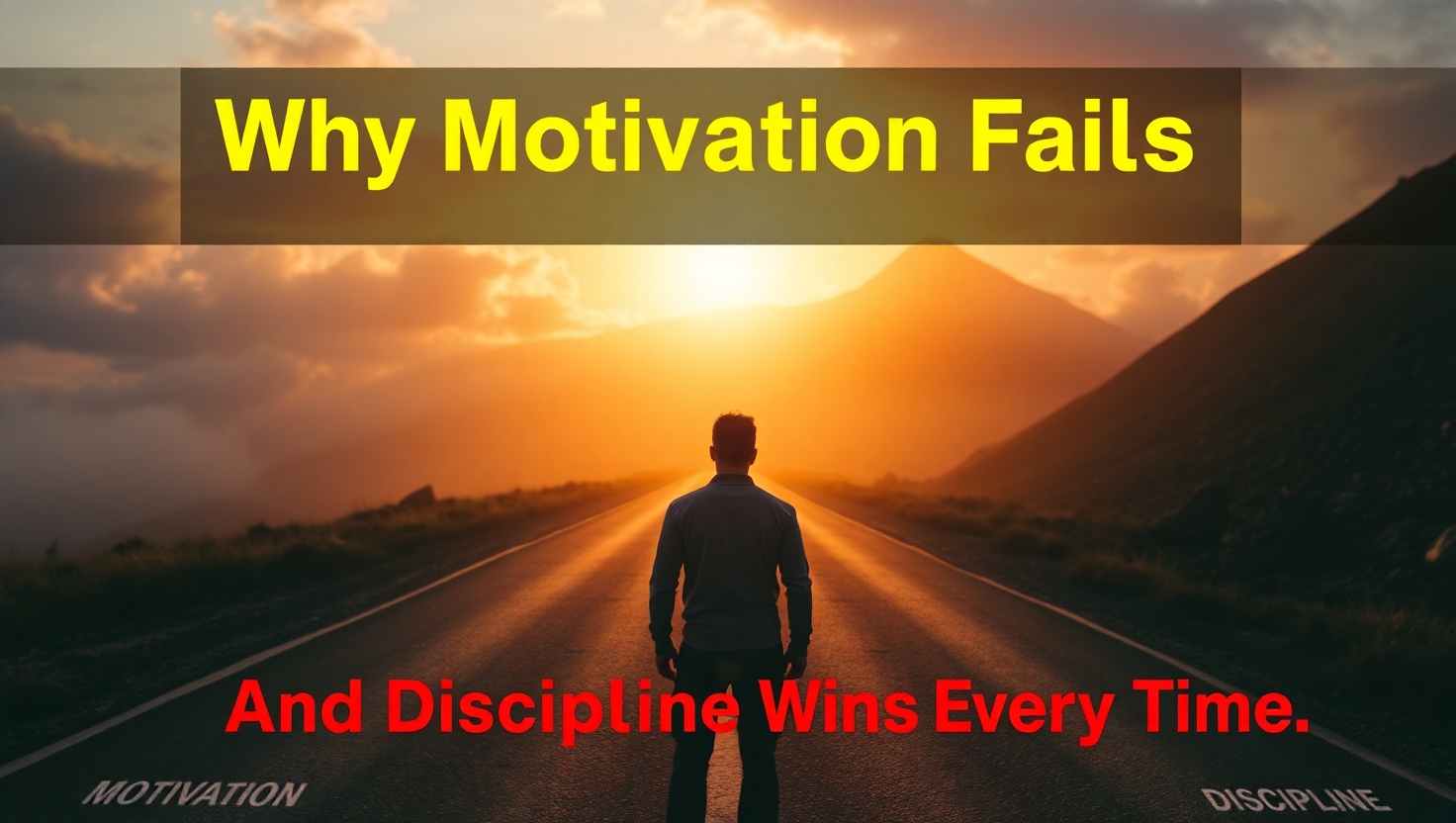
Why Motivation Fails And Discipline Wins Every Time
We all love the feeling of motivation—that surge of energy, that rush of inspiration that makes everything seem possible. But here’s the problem: motivation is unreliable. It’s emotional. It comes and goes. And if your goals rely on you “feeling like it,” you’re already in trouble.
Read Full Article
Discipline Over Desire
Desire is loud. It burns bright, talks fast, and loves to dream. But desire alone doesn't achieve much. Every person has desires. Very few have the discipline to bring them to life.
Read Full Article
The Science of Sticking
If you've ever tried to build a new habit, you've probably heard that it takes 21 days. This number gets thrown around so often that it feels like scientific fact.
Read Full Article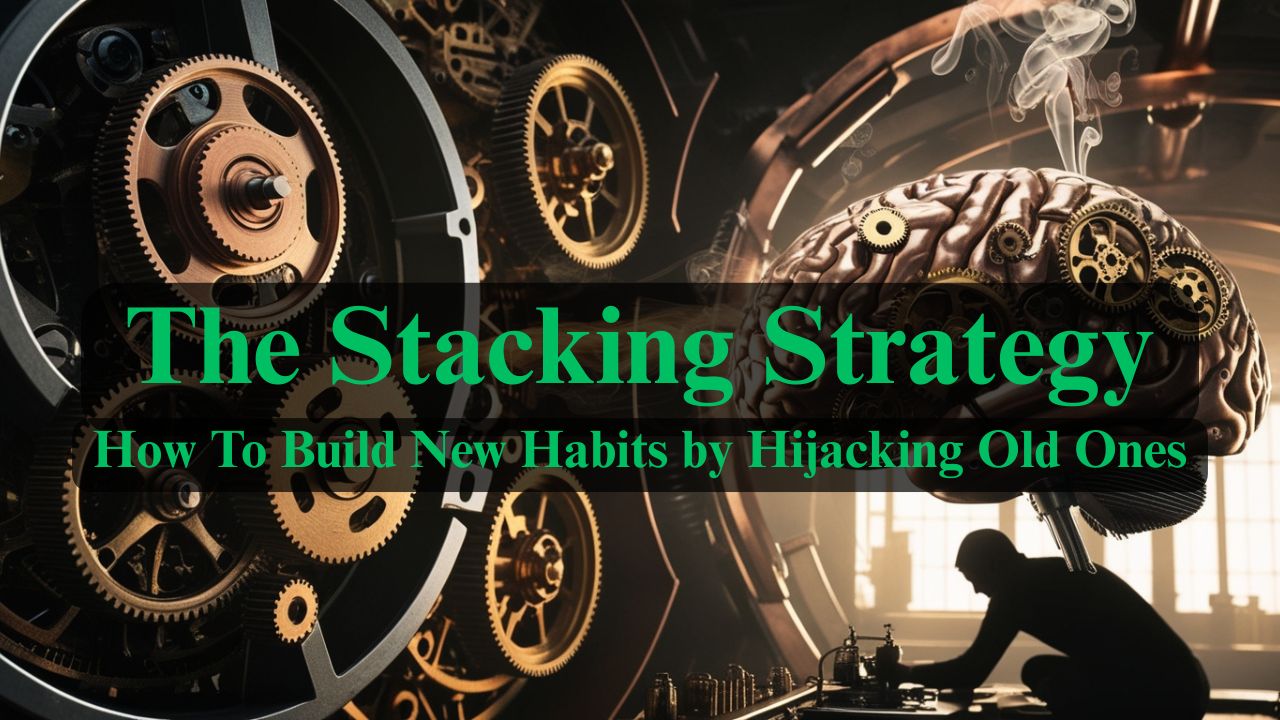
The Stacking Strategy
What if I told you that the habits you already have—even the ones you consider "bad"—could become the secret weapons for building the habits you want?
Read Full Article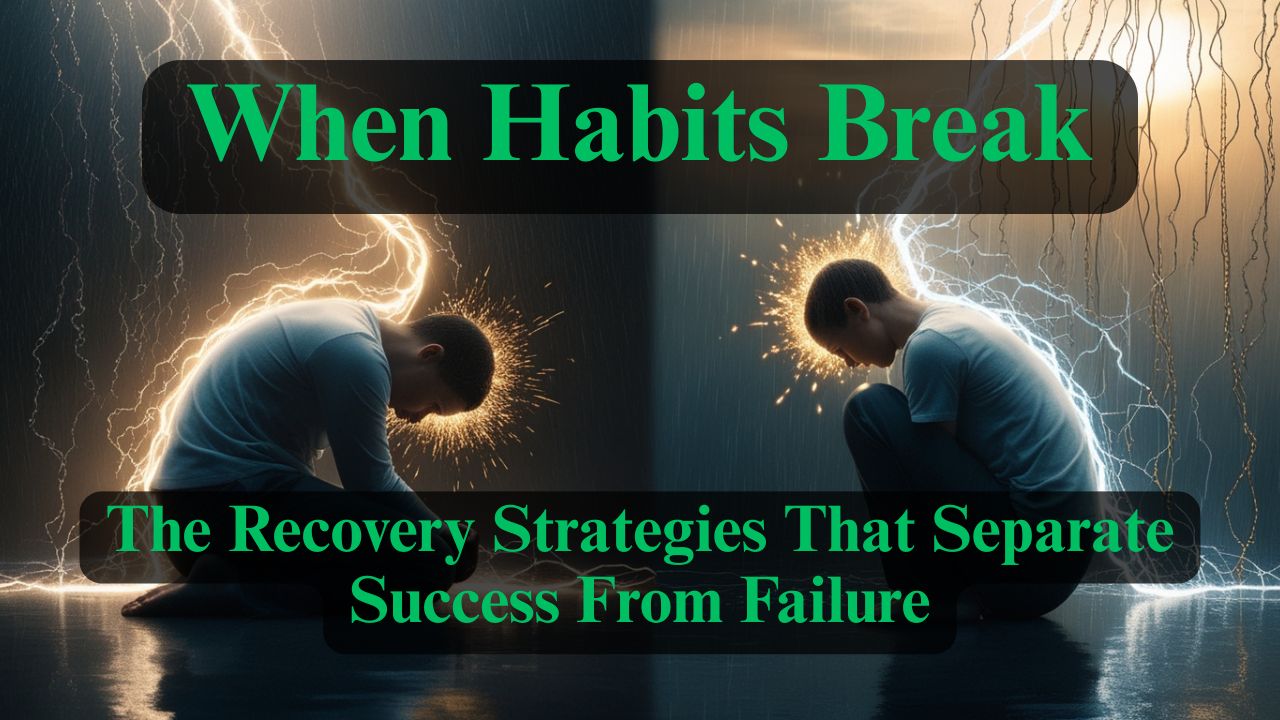
When Habits Fail - The Recovery Strategies That Separate Success From Failure
Here's what nobody tells you about building habits: you will fail. You'll miss days. You'll fall off track. You'll have weeks where everything falls apart.
Read Full Article
The Ultimate System - Designing a Life Where Good Habits Are Inevitable
You've learned to recognize habits, understand their formation timeline, stack them strategically, and recover from setbacks.
Read Full Article
